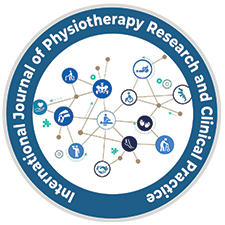


International Journal of Physiotherapy Research and Clinical Practice
DOI: 10.54839/ijprcp.v4i2.25.31
Year: 2025, Volume: 4, Issue: 2, Pages: 13-16
Short communications/brief reports
Mayuri Chandra1,∗, Suman Kumar Tadagonda2, Tejaswini Damerla1
1Spine Physiotherapist, Department of Physiotherapy, nSure Healthy Spine, Jubillee Hills, Hyderabad, Telangana, India
2Sports Medicine Physician, Department of Physiotherapy, nSure Healthy Spine, Jubillee Hills, Hyderabad, Telangana, India
*Corresponding Author
Email: [email protected]
Neck pain is a prevalent mechanical musculoskeletal condition often linked to alterations in cervical lordosis, commonly resulting from poor posture, muscle imbalances, or degenerative changes. This commentary examines the role of conservative management strategies, including physical therapy, postural correction, and manual therapy, in restoring and maintaining the natural curvature of the cervical spine to alleviate pain. Additionally, it highlights the role of advanced spinal assessment tools, particularly Nordic health devices, which provide precise, quantifiable data on cervical spine alignment, range of motion (ROM), and muscle imbalances. Key outcome measures, such as the Numeric Pain Rating Scale (NPRS), Cobb’s angle, and the Neck Pain and Disability Index (NPAD), facilitate the evaluation of pain severity, spinal alignment, and functional impairment in individuals with neck pain. By leveraging these technologies, objective data can be gathered to identify abnormal spinal curvature and muscle imbalances, enabling the development of personalized rehabilitation programs. The integration of conservative therapy with device-assisted spinal screening offers a comprehensive, evidence-based approach to managing cervical lordosis and mitigating neck pain, with continuous monitoring ensuring sustained treatment effectiveness.
Keywords: Cervical lordosis, Neck pain, Conservative management, Spinal screening, Physical therapy, Postural correction, Manual therapy, Nordic health devices, Range of motion, Muscle imbalance, Numeric Pain Rating Scale (NPRS), Cobb’s angle, Neck Pain and Disability Index (NPAD)
© 2025 Published by Krupanidhi College of Physiotherapy. This is an open-access article under the CC BY license (https://creativecommons.org/licenses/by/4.0/)
Subscribe now for latest articles and news.